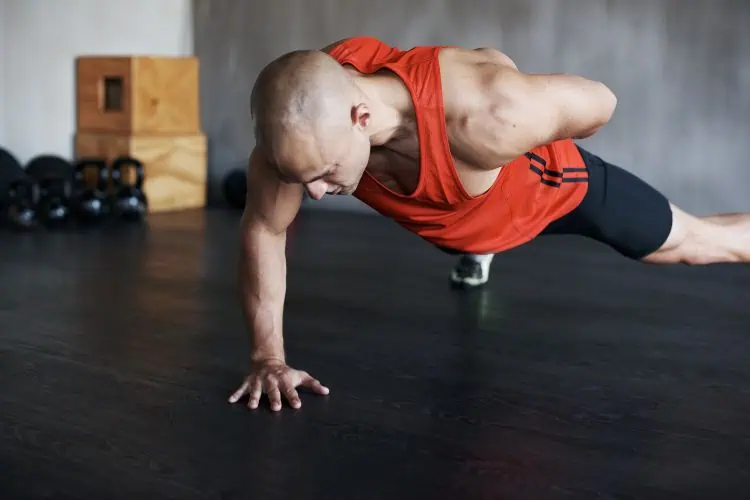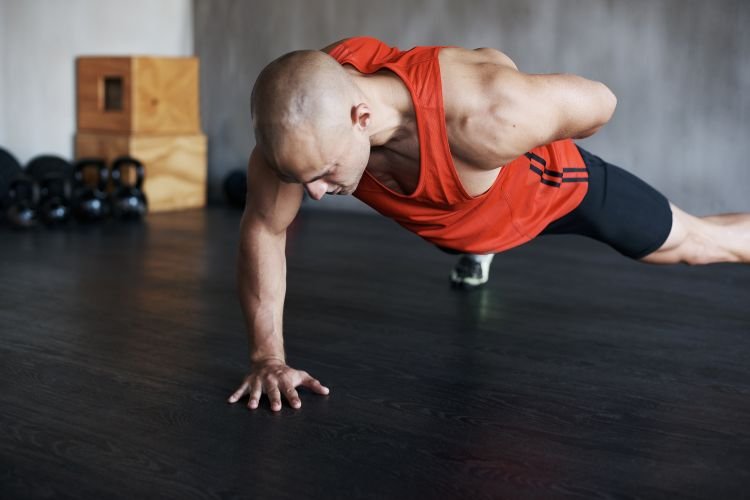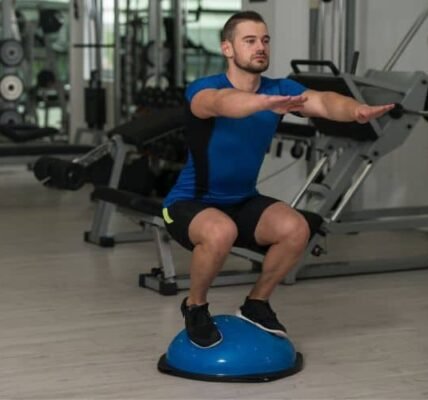
Bodyweight workouts have gained immense popularity for their convenience, versatility, and effectiveness. Among them, bodyweight push workouts stand out as a powerful way to build upper body strength, improve core stability, and enhance muscular endurance—without needing a single piece of gym equipment. Whether you’re working out at home, on the go, or looking to break free from machines and weights, bodyweight push workouts offer a complete and scalable solution.
In this guide, we’ll explore what bodyweight push workouts are, their benefits, the best exercises to include, how to structure a routine, and tips to progress over time.
What Are Bodyweight Push Workouts?
Bodyweight push workouts involve exercises where you push your body away from the ground or another surface using your upper body muscles—primarily the chest, shoulders, and triceps. These workouts focus on “pushing” movements, which are a fundamental part of any well-rounded fitness routine.
Unlike “pull” exercises, which target muscles like the lats and biceps, push exercises engage the pectorals, deltoids, and triceps. They are typically performed with your own body as resistance, making them highly accessible and effective for building strength and endurance.
Benefits of Bodyweight Push Workouts
1. No Equipment Needed
One of the biggest advantages of bodyweight push workouts is that they can be done anywhere, anytime. Whether you’re in your living room, at the park, or in a hotel room, all you need is your body and some floor space.
2. Functional Strength Development
Bodyweight push exercises build real-world strength by engaging multiple muscle groups in a natural movement pattern. This improves not only muscle tone but also functional strength for everyday tasks.
3. Scalable for All Fitness Levels
From beginner to advanced, bodyweight push exercises can be modified to suit your strength and skill level. You can start with incline push-ups and progress to advanced moves like handstand push-ups.
4. Improves Joint Health and Stability
These exercises promote joint stability, particularly in the shoulders and elbows. With proper form, they can strengthen the connective tissues and reduce the risk of injury over time.
5. Enhances Core Engagement
Most bodyweight push exercises also activate the core, helping to improve balance and posture. A strong core supports nearly every movement in your daily life and workouts.
Best Bodyweight Push Workout Exercises
Let’s dive into the most effective bodyweight push exercises you can include in your workout plan. These target the major pushing muscles and can be adjusted for your level.
Push-Up Variations
Standard Push-Up
This classic move targets the chest, triceps, and shoulders while also engaging your core.
- Form Tip: Keep your body in a straight line from head to heels. Don’t let your hips sag or pike.
- Modification: Drop to your knees if you’re a beginner.
Incline Push-Up
Perfect for beginners, this variation reduces the amount of body weight you’re lifting by placing your hands on an elevated surface like a bench or table.
Decline Push-Up Bodyweight Workout
Elevate your feet to place more emphasis on the upper chest and shoulders. This is a great progression from the standard push-up.
Diamond Push-Up
Place your hands close together under your chest with thumbs and index fingers forming a diamond. This variation intensely targets the triceps and inner chest.
Wide Push-Up
Place your hands wider than shoulder-width apart. This places more stress on the chest and less on the triceps.
Advanced Bodyweight Push Workout Exercises
Archer Push-Up
Move one arm farther to the side and shift your weight toward it while pushing. This builds unilateral strength and prepares you for one-arm push-ups.
One-Arm Push-Up
The ultimate bodyweight push challenge. It requires immense strength, balance, and core control. Use progression techniques like elevated surfaces or partial reps.
Handstand Push-Up (Against a Wall)
Great for shoulder and upper chest development. Start with wall support and gradually build to freestanding versions.
Pike Push-Up
A fantastic shoulder and upper chest builder. Your body forms an inverted V-shape. Lower your head toward the ground and push back up.
Structuring Your Bodyweight Push Workout
A well-rounded bodyweight push routine should target all angles of your pressing muscles. Here’s how to structure it for maximum results:
Warm-Up (5–10 Minutes)
Start with dynamic movements to prepare your joints and increase blood flow:
- Arm circles
- Shoulder rolls
- High knees
- Jumping jacks
- Push-up walkouts
Sample Beginner Bodyweight Push Workout Routine
- Incline Push-Ups – 3 sets of 10–12 reps
- Standard Push-Ups – 3 sets of 8–10 reps
- Diamond Push-Ups – 2 sets of 6–8 reps
- Pike Push-Ups – 2 sets of 6 reps
- Wall Shoulder Taps – 2 sets of 20 seconds
Intermediate Routine
- Standard Push-Ups – 3 sets of 15–20 reps
- Decline Push-Ups – 3 sets of 10–12 reps
- Archer Push-Ups – 3 sets of 6 per side
- Pike Push-Ups – 3 sets of 8–10 reps
- Wall Handstand Hold – 3 sets of 30 seconds
Advanced Routine
- Handstand Push-Ups – 3 sets of 3–5 reps
- One-Arm Push-Ups – 3 sets of 4–6 reps per arm
- Archer Push-Ups – 3 sets of 8 per side
- Diamond Push-Ups – 3 sets of 10 reps
- Plank-to-Push-Up – 3 sets of 10 reps
Tips to Maximize Your Bodyweight Push Workout Results
Focus on Form
Quality beats quantity. Proper form ensures you’re targeting the right muscles and avoiding injuries.
Use Time Under Tension
Slow down your reps to increase muscle engagement. Try lowering in 3 seconds and exploding up quickly.
Add Reps or Sets for Progress
To build endurance and strength, increase your reps or sets over time. Alternatively, reduce rest between sets.
Incorporate Supersets
Pair push exercises with core or lower body movements to create a balanced full-body session and raise your heart rate.
Include Rest Days
Allow your muscles time to recover. Aim for 48 hours between push workouts if training intensely.
How to Progress Bodyweight Push Exercises
Progression is key in any workout program. Here are ways to level up:
- Modify Angles: Change your body angle to increase difficulty (e.g., from incline to flat to decline push-ups).
- Change Tempo: Slow down the eccentric phase (lowering portion) to build more strength.
- Add Pauses: Pause at the bottom of each rep to increase muscle activation.
- Go Unilateral: Single-arm variations challenge balance and strength more than bilateral exercises.
Common Mistakes to Avoid
Letting Hips Sag
Sagging hips put strain on your lower back and take tension off the core. Always keep your body in a straight line.
Flaring Elbows
Keep your elbows at about a 45-degree angle from your torso to protect your shoulders.
Speed Over Control
Avoid rushing through reps. Controlled movement leads to better form, strength gains, and injury prevention.
Skipping Warm-Up
Warming up prepares your joints and muscles for the work ahead. Don’t skip it—even for short sessions.
Combining Push Workouts With Pull and Lower Body Training
To create a balanced bodyweight training plan, combine push workouts with pull (like bodyweight rows or pull-ups) and lower body movements (like squats, lunges, or glute bridges). Here’s a sample weekly schedule:
- Monday: Push Workout
- Tuesday: Pull Workout
- Wednesday: Lower Body + Core
- Thursday: Rest or Mobility
- Friday: Full-Body Circuit
- Saturday: Active Recovery (Walking, Stretching)
- Sunday: Rest
Bodyweight push workouts are a simple yet highly effective way to build strength, stability, and endurance using nothing but your own body. With a range of push-up variations and advanced techniques, these workouts can be scaled to match any fitness level. Whether you’re just starting or looking to challenge yourself, the push workout is an essential component of your training arsenal.
So clear a bit of space, get into position, and push your fitness to the next level—no gym required.





